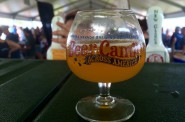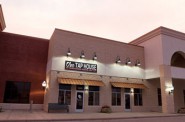Why the IPA Craze?
India Pale Ale has a curious history and a stronger, hoppy taste that is all the rage.
It’s come to symbolize the modern beer drinker. It’s widely seen as the drink of choice for urbanites, and it’s a must-have for any craft brewer’s lineup. The India Pale Ale may fall under the banner of the pale ale style but in the 21st century it has taken on a life of its own.
Originating in the 19th British Empire, India Pale Ale takes its name from the former British colony in which it was extremely popular. According to popular folklore, because of the long journey to India and the hot climate there, any beers imported from Britain tended to spoil before they could arrive to thirsty soldiers and colonists. The answer was to take the already popular pale ale style and increase the alcohol and hop content to ensure freshness and avoid spoilage. The result was a robust and aromatic beer that could make the voyage in perfect condition and survive the hot climate.
Over the centuries, the IPA became a standard among British styles. The United States has more recent, but increasingly fond feelings toward the style. While the pilsner continues to dominate the American masses, the craft beer explosion in the last few decades has pushed the IPA and its variants to the head of the line, taking Generation X and drinking age Millennials by storm. Some scoff at the idea of a beer with such a strong hops taste and aroma. Some disparage it as fermented perfume in a pint. But many more have embraced the style.
Today one would be hard pressed to find a single craft brewery that doesn’t have at least one IPA. Many have built on the time-honored style by producing double and even triple IPA’s, Black IPA’s, Rye IPA’s, and American IPA’s. As with any style of beer, the sub-style is separated by the ingredients used in addition to the traditional ones, such as black malt, a double or triple dose of hops, or malted rye. Leinenkugel’s has set the style on its head with the unveiling of its signature India Pale Lager: The only difference between Leinenkugel’s and traditional IPA is the beer has been lagered, or cold fermented just above freezing.
In addition to Leinkugel’s many, if not all Wisconsin craft breweries offer an IPA. Lakefront, Tyranena, and Point each offer a standard recipe IPA, while Sprecher features a double IPA and its subsidiary, Chameleon Brewing, offers a session IPA and Rye IPA. Pushing the envelope a bit further than its Wisconsin competitors, Milwaukee Brewing Company offers an Americanized version of the India Black Ale as part of its primary lineup, along with a unique seasonal offering called Hoptoberfest. Though not a true IPA, the seasonal brew blends traditional Oktoberfest style with IPA character.
Thanks to renewed interest in beer, due mostly to the craft brew craze, more beer drinkers are drinking outside the box — or bottle, with draft brews. Long established but once greatly overlooked styles like the IPA are now topping the list for many micro-brewers. And with interest comes innovation. Here’s to hoping for a bourbon barrel IPA.
Beer City
-
The Crowd Rules At MobCraft Brewery
 Jul 7th, 2016 by Joey Grihalva
Jul 7th, 2016 by Joey Grihalva
-
Sierra Nevada Beer Camp Was a Winner
 Jun 13th, 2016 by Joey Grihalva
Jun 13th, 2016 by Joey Grihalva
-
The Rise of O’so Brewing Co.
 Dec 1st, 2015 by Christophor Rick
Dec 1st, 2015 by Christophor Rick

















IPAs are all well and good for warm weather drinking, but it’s to the point now where you can’t find a good Octoberfest beer on tap in October.
@Ace of Suds – I agree, IPA’s are great, and it is sad that a good Oktoberfest can’t be found all that often. You may not have noticed, but i did a Wisconsin Oktoberfest beer lineup against Spaten. Point and Lakefront were my personal favorites.
This article seems a little behind the times… as the IPA “craze” has already crested as breweries clamor to find the next big thing as sours, guezes, and mixtures of styles are now being explored.
I agree with the lack of Oktoberfests, although many breweries have changed the names of their fall brews to something other than October to have a longer shelf live to consumers. The September release beers do seem to be making a comeback as Lakefront’s updated Oktoberfest is delicious!
@CJ, Not saying you’re wrong, but IPA’s are still highly popular, especially in Wisconsin. While sours are starting to make an appearance stateside, they’re still few and far between. Personally, i don’t think sours are going to hit hard in the states. They’re a regional delicacy. Furthermore, mixing of styles is nothing new. Brewers, myself included, experiment all the time, that’s how we ended up with shandy’s and pumpkin ales, but that’s getting off track. mixing an aged beer and a fresh beer is honestly a new concept to me, though it sounds a bit revolting considering beer turns for the worst after a few months. Once more, i’m not nitpicking. i’m just offering my insight. But as IPA’s, from what i’m seeing as a critic and consumer they’re still holding strong, at least in Milwaukee. Have they hit their high water mark? Probably, but i don’t think sours are going to be the IPA killer, but who knows? Personally, i think bourbon aged stouts are the new trend in beer.
As for oktoberfest, i feel that name Oktoberfest is a centuries old contradiction, being that the festival is held moreso in September. Calling the beers Marzen instead of oktoberfest would be a better way to extend the life of a seasonal beer, but that’s my opinion. and to be perfectly honest, after Oktoberfest, i’m pretty tired of Marzen beers, as i am with Belgian Weiss in the summer and porters in the winter. When it comes to beer it’s all about personal preference.